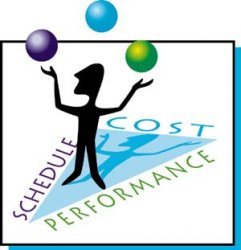As anyone can tell you, project management is a key cornerstone to the successful completion of any project, but for extraordinary projects, like Policy Administration System Replacement projects, a more sophisticated level of project management is needed. But what does a more sophisticated level project management look like? The myriad of project management  disciplines and methodologies out there can give the impression that complex projects require a project management approach that is more scientific and systematic, when in actuality, the more complex the project the less systematic project management gets. This is a counter-intuitive notion, since one would naturally think the more complex the project (i.e., Policy Administration System Replacement project) the greater the need for a systematic project management approach to make sure nothing is missed. This is not to say the project management disciplines and methodologies out there offer no value on a Policy Administration System Replacement project, because they most certainly do. However, when managing a Policy Administration System Replacement a project manager should always keep in mind that those methodologies and tools are merely a starting point (i.e. the “canvas”) for that masterpiece that is successfully managing an endeavor of significant size and complexity in practice.
disciplines and methodologies out there can give the impression that complex projects require a project management approach that is more scientific and systematic, when in actuality, the more complex the project the less systematic project management gets. This is a counter-intuitive notion, since one would naturally think the more complex the project (i.e., Policy Administration System Replacement project) the greater the need for a systematic project management approach to make sure nothing is missed. This is not to say the project management disciplines and methodologies out there offer no value on a Policy Administration System Replacement project, because they most certainly do. However, when managing a Policy Administration System Replacement a project manager should always keep in mind that those methodologies and tools are merely a starting point (i.e. the “canvas”) for that masterpiece that is successfully managing an endeavor of significant size and complexity in practice.
When practicing the art of project management, there are a number of tactics that should be adhered to, particularly on a Policy Administration System Replacement project, which you are not going to find in the PMBOK. These tactics are not hard-and-fast rules in terms of execution, but are more fluid. What do I mean? Well let me provide 4 examples of what I mean:
- Don’t Fall into the Form-Over-Substance Trap – I have seen project managers that can pull together very detailed and comprehensive project plans, create one hell of a status report, capture every risk and issue on a log, and follow whatever management methodology selected for a project to the tee and yet the project fails. In the project postmortem, there are many reasons for a project failure, but in my experience the majority comes down to management. Adherence to project management dogma over substance is a project killer and focusing too much on the paper work rather than results of what really matters does no one any good. Bottom-Line: Use project management methodology and tools as a starting point only and never mistake project administration for project management, because they are not the same thing. So not only should managers not be afraid to deviate from methodology, if they can see how it could provide additional value to the project team and/or the client, a manager should look for opportunities to do so since staying on the strait-and-narrow will bread rigidity that will ultimately doom the project when it does come time to decisively change direction. The art of this approach is in the notion that managers need to know when to let, that which truly does not matter, go when there is a need to focus on critical issues. Reschedule/skip that regularly scheduled meeting, don’t obsess about missing that status report submittal, if the project plan doesn’t get update for a few days that is ok. Those things are not project management; project management is about knowing when those things don’t matter in light of the overall project goals.
- Pay Attention to Your Instinct – Missing a due date on a project plan, having an identified risk go into red status, being alarmed by the number of bugs being logged on a just release build of the system code; these are not the primary indicators that there is a project issue. A project manager on a Policy Administration System Replacement project should intuitively know about these issues well before those types of indicators manifest themselves in the normal project management documentation. It is counter to the way many talk about/view project management, but in Policy Administration System Replacement projects, project managers need to place just as much reliance on the gut than the head in many situations given that they almost never have all the detailed information at hand. If a project manager is blind-sided by any of these happenings (and yes it will happened at least once on the project), then chances are the project manager is discounting the intuition side of the equation. If it doesn’t feel right then it is probably not right. Trust that feeling on a Policy Administration System Replacement project and start to take action. In all likelihood it could end up saving the project.
- Get On A One-On-One Level – Policy Administration System Replacement projects are large undertakings, involving many people from across locations, organizations, departments, and disciplines; not to mention walks of life. Often it is tough, if not a practical impossibility, to meet all team members face-to-face or talk one-on-one at least once, let alone regularly. And the advice that, even despite these typically challenges, the project manager should try to meet all the all team members face-to-face or talk one-on-one at least once during the project is not revolutionary, but what I am trying to get at here is that there is another level that needs to be reached. To manage a Policy Administration System Replacement project the “one-on-one talk” is a key strategy for successful project management. The one-on-one conversation is where managers can get key pieces of information, but it is not something best achieved in an overly procedural manner. Picking out a few key people on the project t and scheduling a recurring one-on-one conference call will not do. With that approach it will not take long for the feedback to become obligatory and stale. Sometimes you get your best results when the person does not know when the project manager is going to call to get a status or inquire about their feelings on how the project is going. Also the “key people” you need to talk to are not always the people in the key project roles. A project manager on a Policy Administration System Replacement project will need to figure out who and when to call; that is the art of the process. The one-on-one conversation should be informal, but these types of discussion should be a common occurrence regardless of project status or stage. The one-on-one conversations a manager has on the Policy Administration System Replacement is often more important than the regularly schedule status and team meetings that are a staple of all projects (big and small).
- Listen More Then You Talk At Status Meetings – On a Policy Administration System Replacement project it is a practical impossibility for the project manager to read every email, be up-to-speed on what everyone is working on and the status of the applicable tasks all the time, which is why the art of listening gets a special place in the management of a Policy Administration System Replacement project. And I don’t necessarily mean listen to the specifics of each team member report, because, while the technical/operational details of a report is of course important, how a team member gives their report is often more important. You can get technical status details in an email, but you can’t get other details that are perhaps more telling, like: body language, pauses, voice inflections, etc. These tell-tale-signs indicate whether a team member really knows what their assignment is, how it is progressing, are they disengaged from the project, etc. This information will help the project manager determine who he/she needs to follow up with outside the team meeting and who is on track and therefore need less oversight in the short-term. If managers ignore this type of involuntary feedback, they could miss personnel/ operational task issues that could result in level project issues if not address.
There are of course more non-traditional tactics employed in the management of a Policy Administration System Replacement project, but the main point is to try to shift the thinking that the key successful project management of a Policy Administration System Replacement is a greater adherence to methodology and tools. Project management is an art as well as a science and the Policy Administration System Replacement project requires at least an equal measure of both to be successful.

 ing planet earth to bits is not as simple as it may seem. It takes considerable amount of energy to blow up
ing planet earth to bits is not as simple as it may seem. It takes considerable amount of energy to blow up 



 In times like this every PMP needs a healthy dose of a new and improved PMP, that is, project management practicality. As the recession lingers, those of us who drive the success of projects, programs, and any corporate initiative are going to have to find new ways of doing more with less. Here are seven practical tips for cutting corners without sacrificing project success.
In times like this every PMP needs a healthy dose of a new and improved PMP, that is, project management practicality. As the recession lingers, those of us who drive the success of projects, programs, and any corporate initiative are going to have to find new ways of doing more with less. Here are seven practical tips for cutting corners without sacrificing project success.